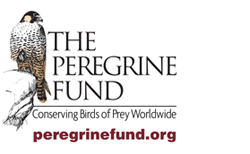On Tue, Oct 17, 2017 at 10:40 AM, Darcy Ogada ogada.darcy@peregrinefund.org [kenyabirdsnet] <kenyabirdsnet-noreply@yahoogroups.com> wrote:
Yes, it is a difficult problem that has never been solved in any country to date. However, it is really important that someone documents the aftermath of these aerial poisonings. We shouldn't be content to just be told by Desert Locust Control/Ministry of Ag. that the quelea problem is solved. There is massive collateral damage that won't be documented unless someone concerned is able to be on the ground. From what I was sent, it appears a massive spray is scheduled for Weds, but there was also some pesticide bombing that occurred this past Sat. Is anyone able to visit Mwea on Weds to document both with photographs and by counting the species affected, including talking to locals who will also be affected by the spraying. I believe they use Fenthion, which kills dermally, i.e. on contact with skin.Cheers, DarcyDarcy OgadaAssistant Director of Africa Programs
+254-722-339366
P.O. Box 1629-00606•Nairobi•KenyaOn Tue, Oct 17, 2017 at 9:58 AM, Kariuki Ndang'ang'a ndanganga@yahoo.com [kenyabirdsnet] <kenyabirdsnet-noreply@yahoogroups.com > wrote:well ..... too late this time around :( May it is time to arm ourselves with- and promote among relevant counties, a simplified set of best practice guidelines on how to deal with the birds, hoping that in the long term we'll make a difference.On Tuesday, October 17, 2017, 9:19:25 AM GMT+3, Fleur Ng'weno <fleur@africaonline.co.ke> wrote:Looks like the birds were sprayed over the weekend (see clipping attached)
On 10/16/17 6:49 AM, "Kariuki Ndang'ang'a ndanganga@yahoo.com [kenyabirdsnet]" <kenyabirdsnet-noreply@yahoogroups.com > wrote:
For your information, page 46 of this document in the following link talks a bit about minimising risks from quelea poisoining:
http://migratorysoaringbirds.undp.birdlife.org/sites/default /files/msb_project_agro- chemical_guidance_.pdf
--James Christian
Karisia Walking Safaris
